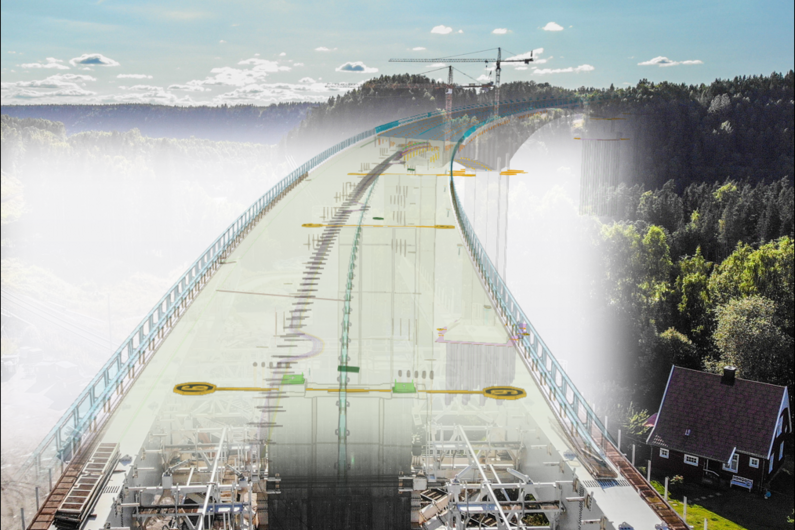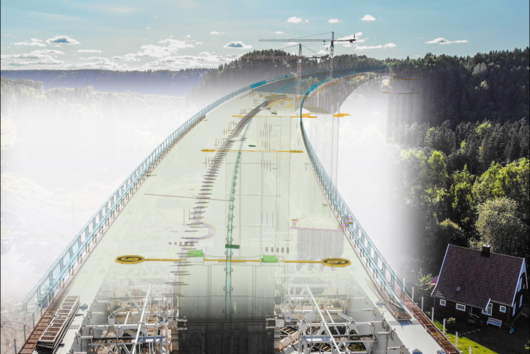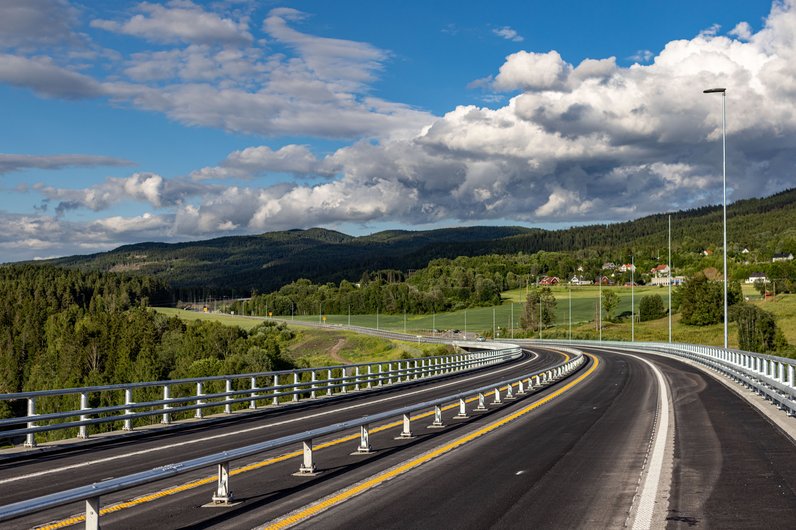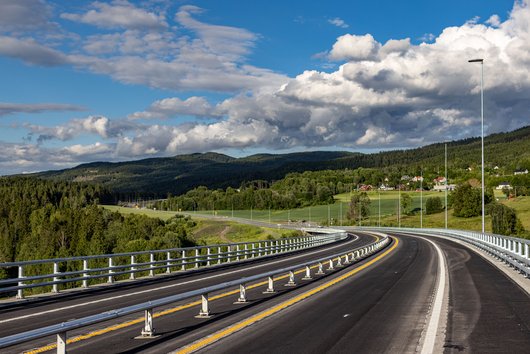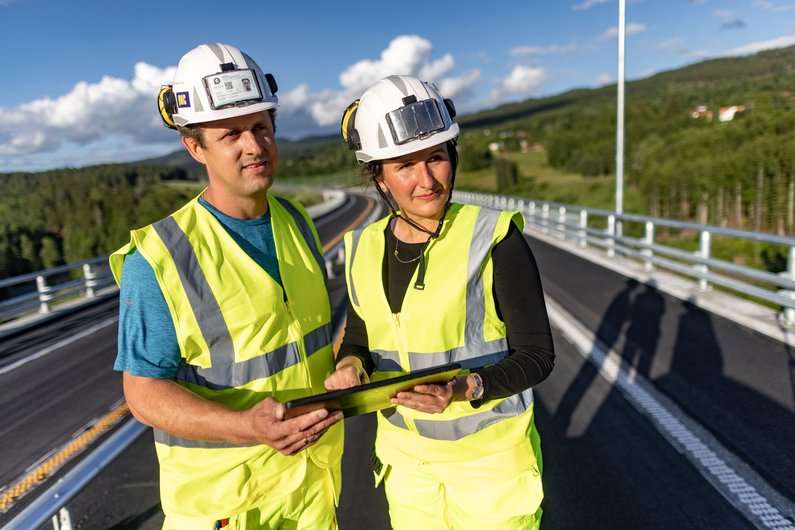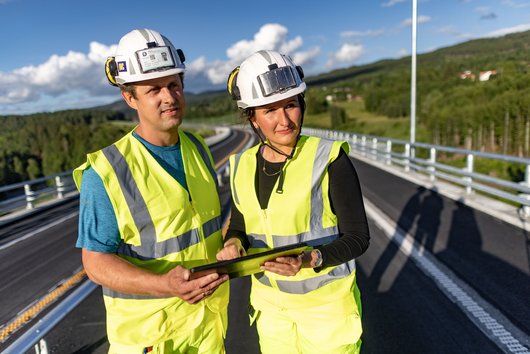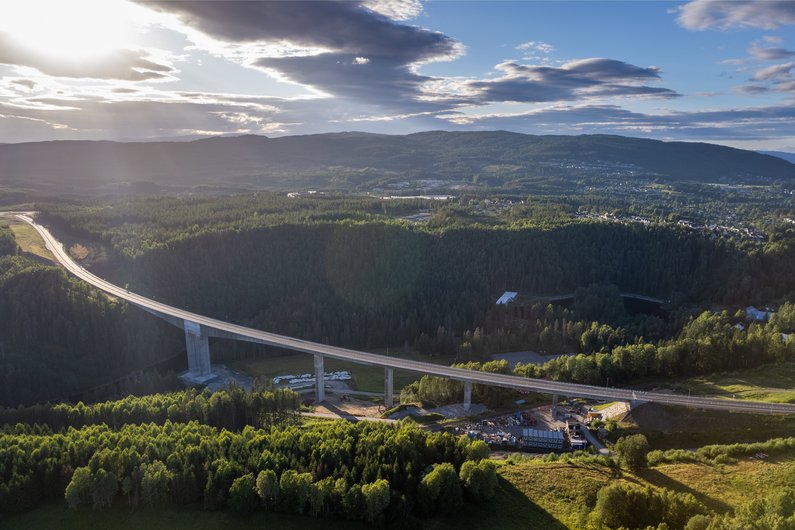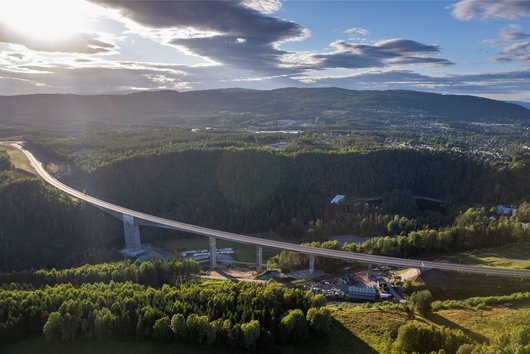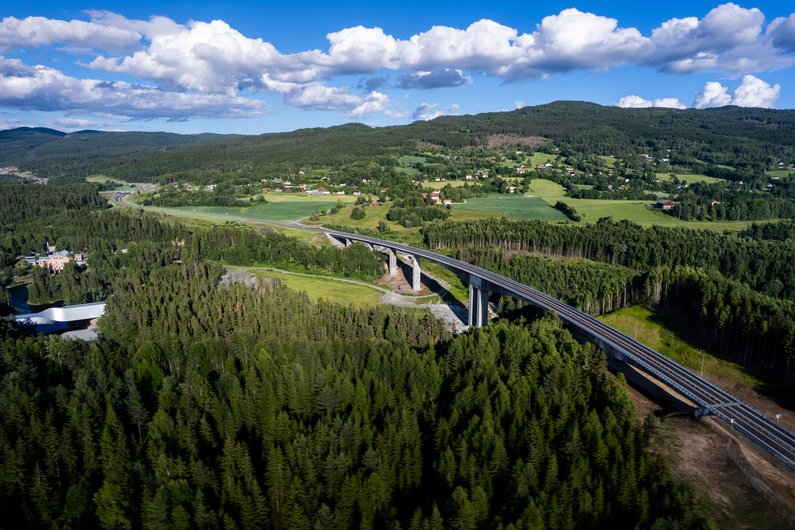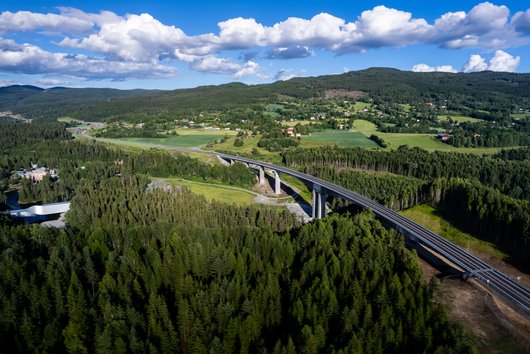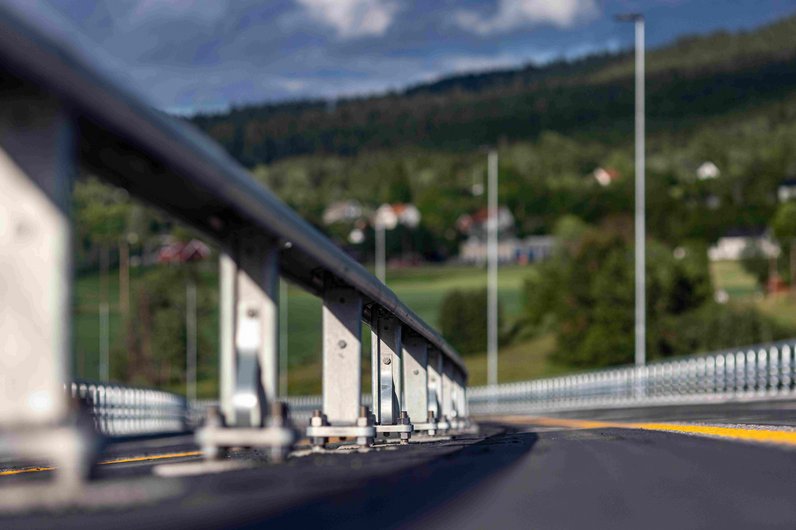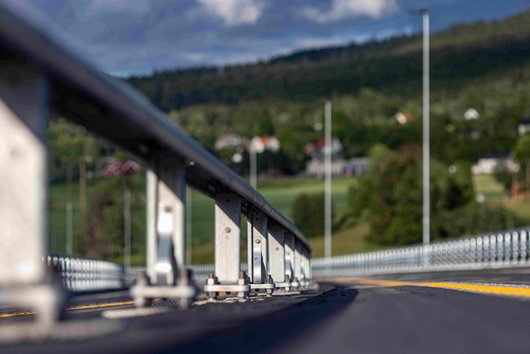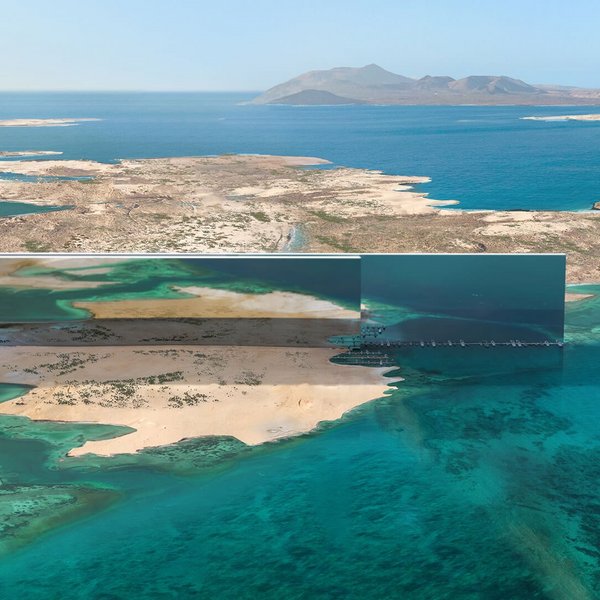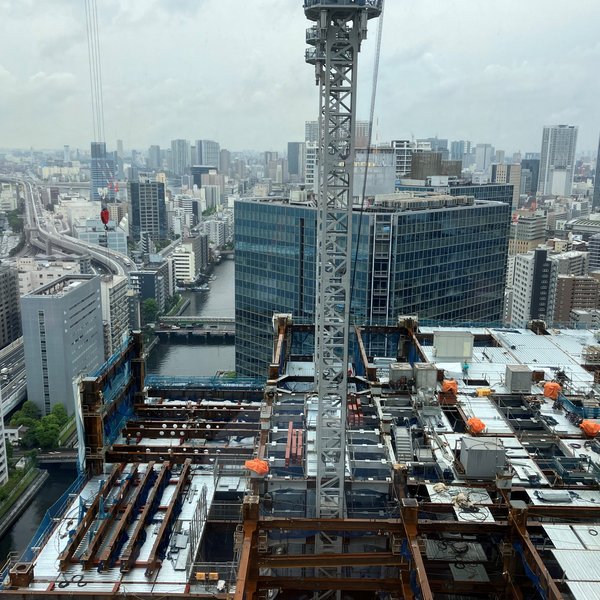
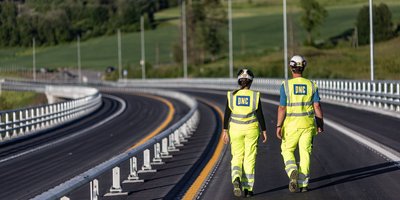
The Nor-way of Construction
Once upon a time there was a coffee machine next to a plotter. And a CRT monitor next to that. Copies of execution plans were stacked on long shelves. And every day there was a delivery with new plans in multiple copies – for the subcontractors, the work groups, the site management, the foremen, and the accountants. Distributing plans, sorting, filing, checking indices: the LEAN concept means that tasks that used to take a lot of time are now considered a waste of time. Today, planning data is stored digitally and is therefore available to everyone involved at all times. We are also making impressive use of BIM on the E16 Randselva Bridge in Norway.
For a bridge over 600m long, as in our example, the tender documents consist of a key plan and a link to the BIM model. The data must be accessible – not only for clients, but also for subcontractors. For the current project in Norway, we also introduced an industry first: the reinforcement supplier no longer received reinforcement plans, only the data from the BIM database. Each iron has its own bending shape and parameters. The iron bender was able to use these standardised values directly in their work. This means no more sending plans and manually analysing bending lists. Each omitted work step means one less source of error. Despite there being more than 200,000 reinforcing bars, we were able to significantly reduce the workload for this process step, thanks to interface optimisation. The project started in 2019. The next step in interface optimisation is giving the reinforcement supplier direct access to the BIM model. Then the only additional information the reinforcement supplier would need is the delivery date.
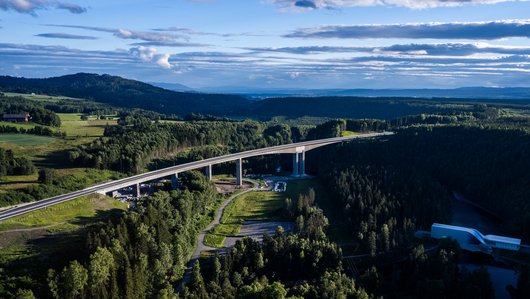

Digital quality control
The BIM model is not only used for meetings with suppliers and discussions about how a specific product can be integrated into planning. Or whether clashes can occur. Or whether information is still missing. Thanks to digitalisation, quality control can also be carried out more easily and quickly. For the Randselva Bridge, we used Trimble Connect software, which enabled us to check the quality of the reinforcement placement using Augmented Reality. The software also supports the position control of built-in elements. The real image is overlaid with the model, allowing for a visual check of the work on site. This method has already been discussed in many publications. To see it in action and make use of it isimpressive.
BIM has made its way from site office to project to construction management. But how does it come to commercial employees on the construction site? Digitalisation and the use of BIM models have changed many requirements. Colleagues must be able to read and interpret digital data. As a result, the world of work is changing, with the advantage that the execution teams have direct access to information from Planning. In an instant. And without lost cover sheets. More efficiency and better quality – BIM has already helped us move a long way in the ever-changing construction industry. We still have the final stage to accomplish. Step by step. And always one step ahaead.

